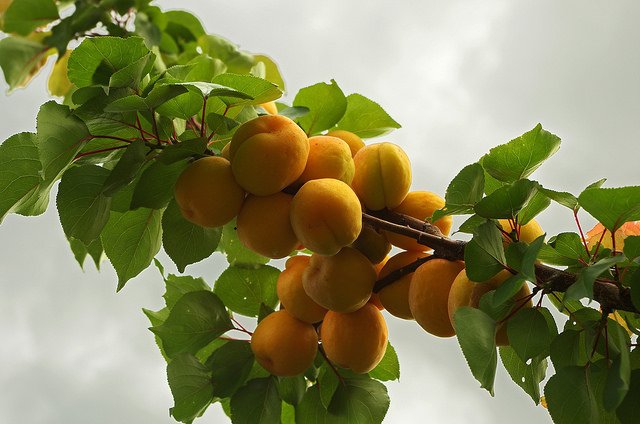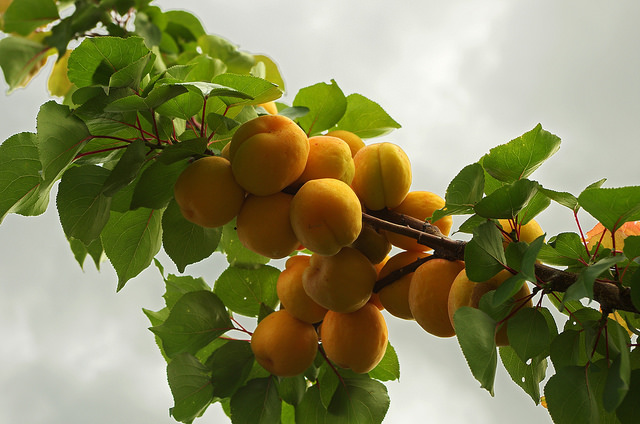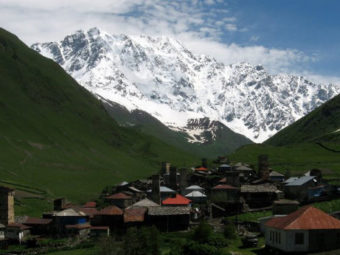If you ever wanted to try a fruit that smells of the sun and is as sweet and tasty as it can get, then the Armenian apricot is made for you. Legend says that the apricot is the only fruit Noah brought from the Ark after the Great Flood. And still today the apricots grown in the Ararat Valley are considered the best in the world.
The apricot, tsiran in Armenian, is the country’s national symbol. Its kings used to ride into battle wearing tsirani, apricot colored ornaments and the color is even reflected in the national flag. The connection of the country’s history with the fruit is so deep, that for a long time it was considered general knowledge that the origin of the apricot’s domestication lies in Armenia. Today this theory is much disputed, since admittedly many hints, like more than 6000 year old seeds discovered during archaeological excavations, point to Armenia – yet there is also valid evidence indicating India or China as the apricot’s origin.
However this scientific debate may end, there is one thing that will always tie a close connection between the country and the fruit: its botanical name Prunus armeniaca, meaning the Armenian plum. The apricots origin also doesn’t change the fact, that Armenia’s volcanic soil, the cold winters and the warm summers provide the ideal conditions for the sweet fruit to develop its full potential.

Apricot season lasts from the middle of June till the late August, during which it is almost impossible not to stuff your face with the tasty sweetness each day, be it directly from the tree or as jam, jelly, compote, on cakes or with lamb and chicken – there is hardly any dish that can’t be improved with a few apricots.
But not only the fruit itself has an important place in Armenian culture. The duduk is a traditional Armenian wind instrument, famous for its sad, melancholic, deep and full sound which can only be achieved with apricot wood – hence its nickname tsiranapoh – pipe which is made from an apricot tree.
Being cultivated in Armenia since antiquity, the apricot was brought to Greece by Alexander the Great. A bit more than 200 years later, after having defeated the legendary Armenian king Tigranes, the Roman general Lucullus brought apricot trees to Rome, from where they found their way all over Europe – although they are nowhere as golden and taste as sweet as in the Ararat Valley in Armenia.
Join the Caucasian Challenge this June, and with some luck you’ll be able to taste the sweetness of the first, freshly harvested Armenian apricots of the year!






Leave a Reply